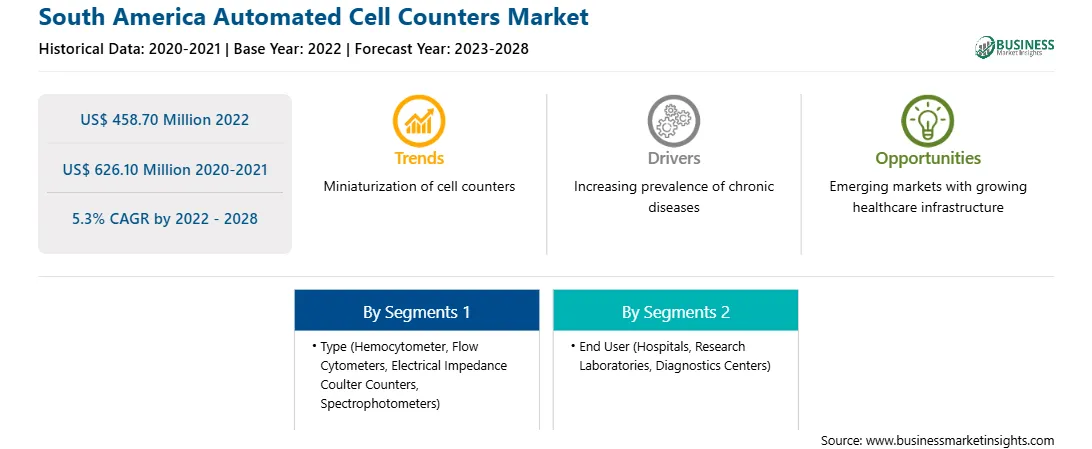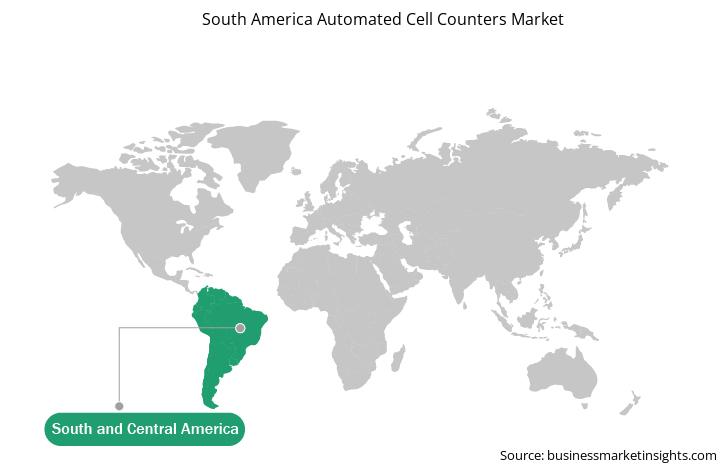The biotechnology & biopharmaceutical industry is focusing on the discovery and development of drugs to treat various diseases. Cell and molecular biology have become crucial parts of the modern drug discovery process. Monitoring the interaction of cells and internal cellular activity provides critical information on cell health, changes in disease states, and the response of targets to potential therapeutic compounds. The ability to visualize biological activities at a cellular level has been a major element in drug discovery. Further, the addition of automation and high-volume screening methods allowed the testing of many compounds. For instance, monitoring the effect of various compounds against a specific type of cancer is executed on a cellular level. Automated Cell Counters are used to monitor the changes in cancer cell characteristics at every stage of cancer. There are webinars held to create awareness about the techniques that are used for cell imaging and cell counting by various institutes. For instance, the ATA Scientific Instruments, in October 2020, held four new webinars that were specifically focused on cell counting and imaging for drug discovery. Thus, the increase in the discovery and development of drugs is boosting the demand for automated cell counters.
In South America, the market growth is attributed to developments of a wide range of automated cell counters applications in the field of pharmaceutical, biotechnology, medical research, and diagnostic labs in Brazil and the rising incidence of patients suffering from chronic and infectious diseases.
Strategic insights for the South America Automated Cell Counters provides data-driven analysis of the industry landscape, including current trends, key players, and regional nuances. These insights offer actionable recommendations, enabling readers to differentiate themselves from competitors by identifying untapped segments or developing unique value propositions. Leveraging data analytics, these insights help industry players anticipate the market shifts, whether investors, manufacturers, or other stakeholders. A future-oriented perspective is essential, helping stakeholders anticipate market shifts and position themselves for long-term success in this dynamic region. Ultimately, effective strategic insights empower readers to make informed decisions that drive profitability and achieve their business objectives within the market.

| Report Attribute | Details |
|---|---|
| Market size in 2022 | US$ 458.70 Million |
| Market Size by 2028 | US$ 626.10 Million |
| Global CAGR (2022 - 2028) | 5.3% |
| Historical Data | 2020-2021 |
| Forecast period | 2023-2028 |
| Segments Covered |
By Type
|
| Regions and Countries Covered | South and Central America
|
| Market leaders and key company profiles |
The geographic scope of the South America Automated Cell Counters refers to the specific areas in which a business operates and competes. Understanding local distinctions, such as diverse consumer preferences (e.g., demand for specific plug types or battery backup durations), varying economic conditions, and regulatory environments, is crucial for tailoring strategies to specific markets. Businesses can expand their reach by identifying underserved areas or adapting their offerings to meet local demands. A clear market focus allows for more effective resource allocation, targeted marketing campaigns, and better positioning against local competitors, ultimately driving growth in those targeted areas.

The South America automated cell counters market is segmented on the basis of type, end user, and country. Based on type, the market is segmented into hemocytometer, flow cytometers, electrical impedance coulter counters, and spectrophotometers. The spectrophotometers segment held the largest market share in 2022. Based on end user, the market is categorized into hospitals, research laboratories, diagnostics centers, and others. The hospitals segment held the largest market share in 2022. Based on country, the market is segmented into Brazil, Argentina, and the Rest of South America. Brazil dominated the market share in 2022.
Eppendorf; Thermo Fisher Scientific Inc.; Countstar Inc.; Bio-Rad Laboratories, Inc.; F. Hoffman-La Roche Ltd; Beckman Coulter, Inc. (Danaher); Nanoentek; Olympus Corporation; MERCK KGaA; Sysmex Corporation; Agilent Technologies, Inc.; Abbott; and Nexcelom Bioscience LLC. are the leading companies operating in the South America automated cell counters market.
The South America Automated Cell Counters Market is valued at US$ 458.70 Million in 2022, it is projected to reach US$ 626.10 Million by 2028.
As per our report South America Automated Cell Counters Market, the market size is valued at US$ 458.70 Million in 2022, projecting it to reach US$ 626.10 Million by 2028. This translates to a CAGR of approximately 5.3% during the forecast period.
The South America Automated Cell Counters Market report typically cover these key segments-
The historic period, base year, and forecast period can vary slightly depending on the specific market research report. However, for the South America Automated Cell Counters Market report:
The South America Automated Cell Counters Market is populated by several key players, each contributing to its growth and innovation. Some of the major players include:
The South America Automated Cell Counters Market report is valuable for diverse stakeholders, including:
Essentially, anyone involved in or considering involvement in the South America Automated Cell Counters Market value chain can benefit from the information contained in a comprehensive market report.